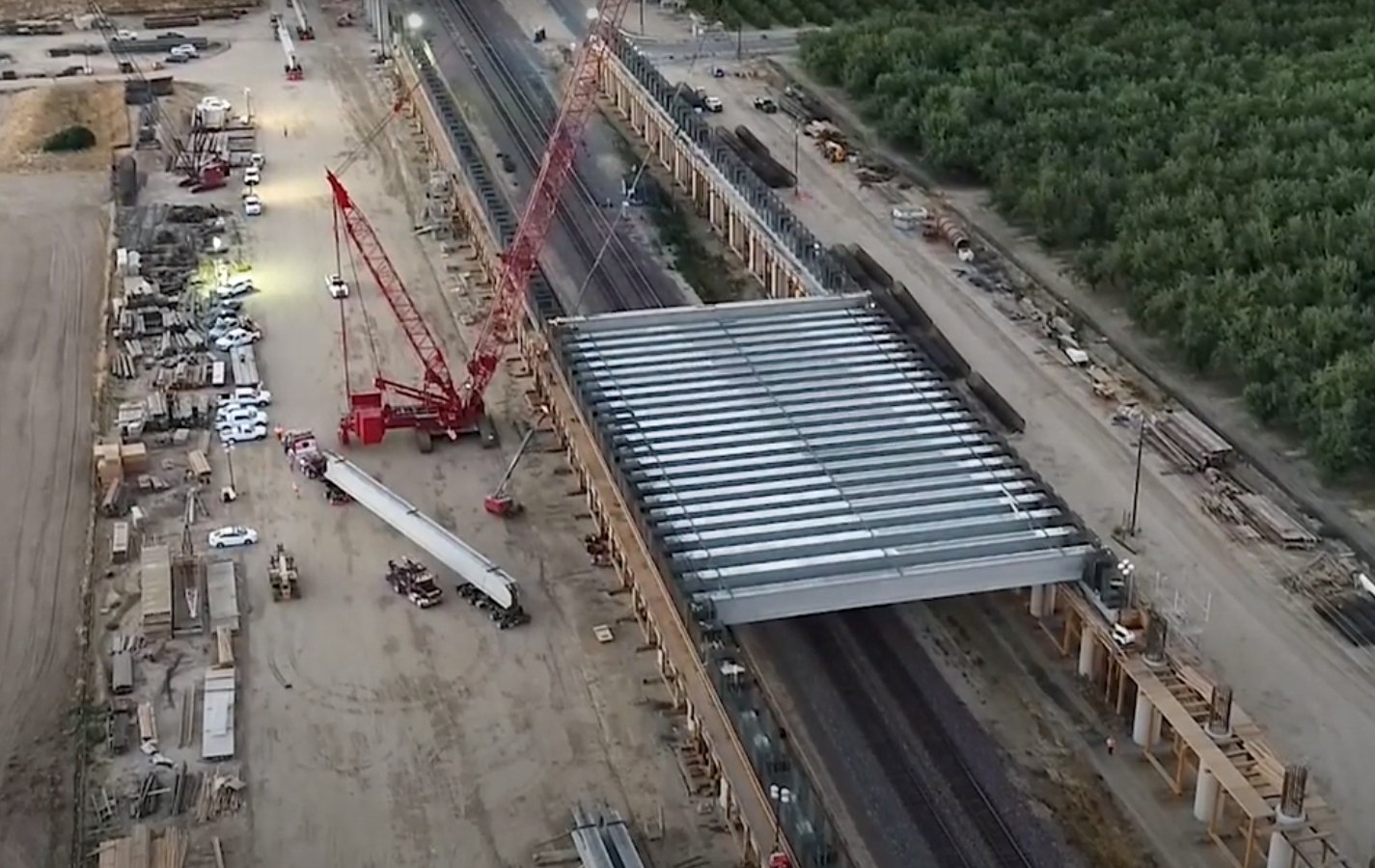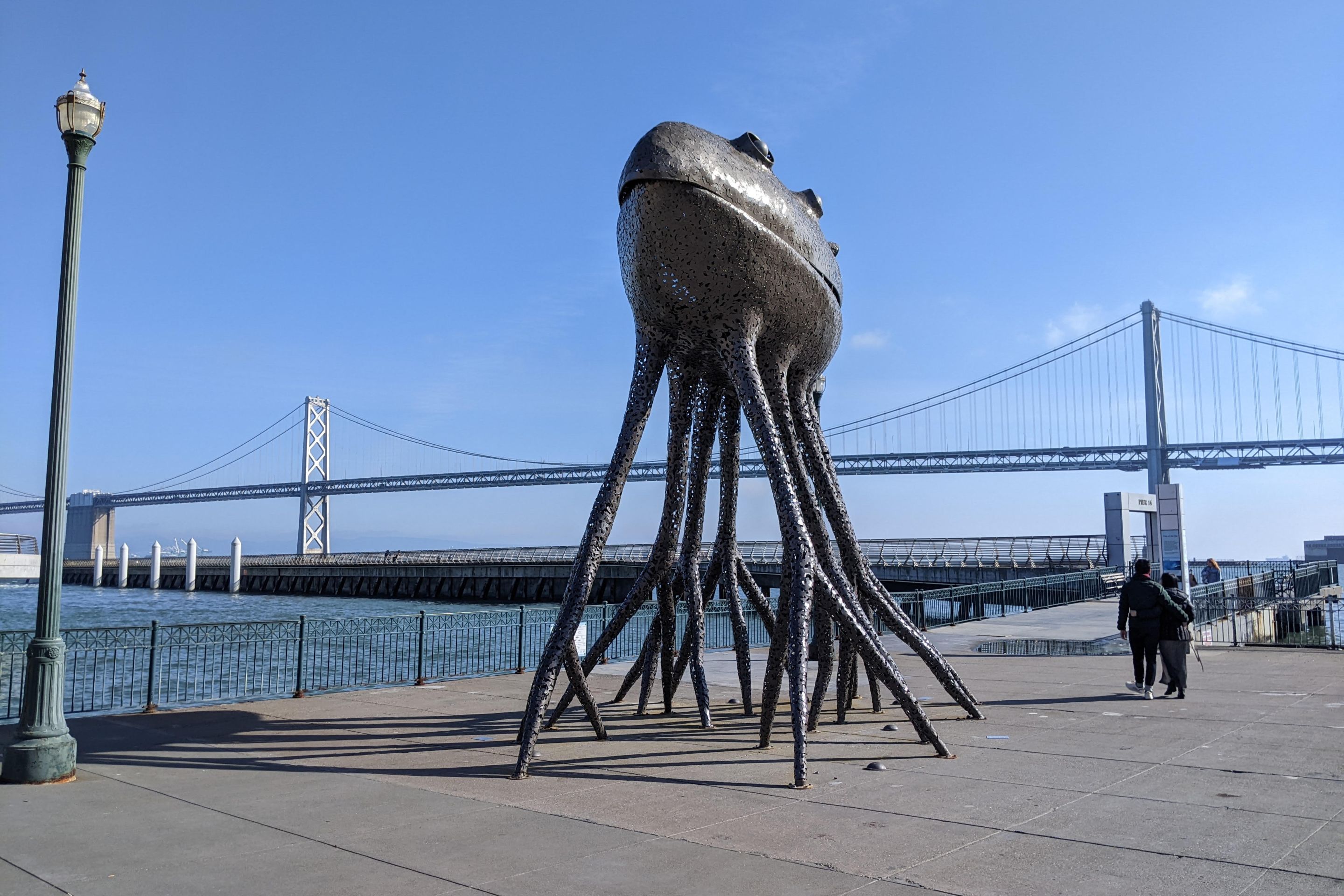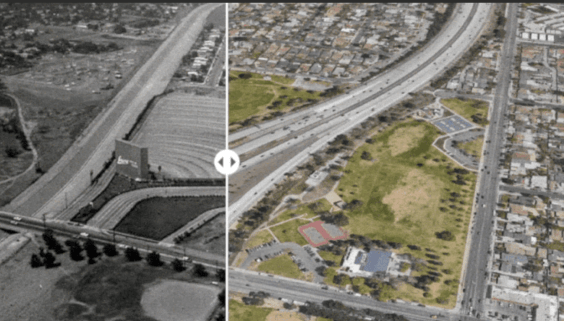Nearly 120 miles of high-speed rail construction is underway up and down the Central Valley, employing over 1,000 workers. Engineering and design work is being done on the bookends in southern and northern California. Tangible and impressive progress continues on the $70 billion project that will one day link all the major cities of the state (as well as Las Vegas).
But, of course, for readers of the L.A. Times, none of this is real. Instead, it's all a "horrible sequence of mistakes."
In his latest story, the paper's chief reporter on the beat, Ralph Vartabedian, talks about a "botched" HSR bridge in Madera county which unnamed "outside engineers" compare to "...the 2018 Florida International University disaster, in which multiple players failed to recognize defects in a pedestrian bridge that collapsed onto a Miami roadway."
Of course, "on the Madera County project, there has been no bridge failure or casualties." But in Miami "six people were killed."
The Engineering News Record's Aileen Cho took a balanced, non-hyperbolic approach, pointing out that the contractor on the bridge, Tutor Perini:
...responded to the L.A. Times in a letter: “The bridge in question, just one of more than 30 bridges in Tutor Perini’s contracted portion … had an issue with water in a few of the post-tensioning ducts. Through investigation, Tutor Perini discovered that the water made its way into the post-tensioning ducts through broken vent tubes. These tubes were found to be broken during installation by the rebar subcontractor."
The letter adds that "the breaks were small enough to not be seen, but large enough to allow water to intrude into the post-tensioning ducts, which resulted in the corrosion of the post-tensioning strands. As a result, Tutor Perini is now in the midst of an engineer-approved repair plan to replace all the strands in every post-tensioning duct. This plan has been checked by an independent engineer and reviewed and approved by the engineering staff of the California High-Speed Rail Authority."
The firm says "the total cost of the repair is nominal and is the contractual responsibility of the rebar subcontractor. Everyone associated with the engineering of the bridge believes that once the issue has been corrected the bridge will have 100% of its design capacity and there will be no impact to the overall project.” [Emphasis added]
That last sentence, arguably the most relevant one, was omitted from Vartabedian's story.

Some other information omitted from Vartabedian's story comes from the CAHSRA's Annie Parker: "The contractor is responsible for the construction issues that have been identified and will pay for the repairs. Pre-construction work on the repairs began last week. The structure will not open until all of the repairs are done and the structure is deemed safe for the traveling public."
So a pedestrian bridge in Florida was finished, opened to the public, fell down, killed and injured people.
In California, a highway bridge that is one small part of a huge rail project had problems during construction. They were identified. They are being repaired at no expense to the taxpayer.
Streetsblog hopes Vartabedian's "outside engineers" will contact us and help us better understand the comparison. The "...executive at one firm working on the project" should probably get in touch too.






